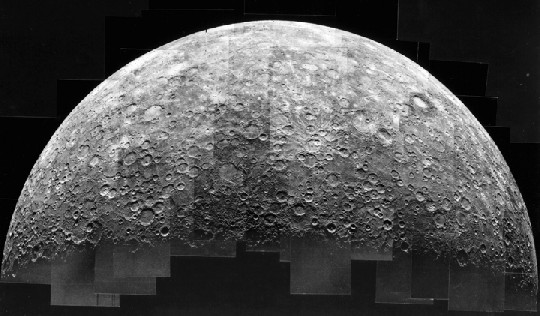Credit & Copyright: Mariner
10,
NASA
Explanation:
Mercury's surface looks similar to our Moon's. Each is heavily
cratered and made of rock.
Mercury's
diameter is about 4800 km, while the
Moon's is slightly less at about 3500 km (compared with
about 12,700 km for the
Earth). But
Mercury is unique
in many ways.
Mercury is the closest
planet to the
Sun, orbiting at about 1/3 the radius of the
Earth's orbit. As
Mercury slowly
rotates, its surface temperature varies from an unbearably cold -180 degrees
Celsius
to an unbearably hot 400 degrees
Celsius. The place nearest
the
Sun in
Mercury's
orbit changes slightly each orbit - a fact used by
Albert Einstein to help verify the correctness of his
then newly discovered theory of gravity:
General Relativity.
The
above picture was taken by the only spacecraft ever to pass
Mercury:
Mariner 10 in 1974.
1999 2000 2001 2002 2003 2004 2005 2006 2007 2008 2009 2010 2011 2012 2013 2014 2015 2016 2017 2018 2019 2020 2021 2022 2023 2024 2025 |
Yanvar' Fevral' Mart Aprel' Mai Iyun' Iyul' Avgust Sentyabr' Oktyabr' Noyabr' Dekabr' |
NASA Web Site Statements, Warnings, and Disclaimers
NASA Official: Jay Norris. Specific rights apply.
A service of: LHEA at NASA / GSFC
& Michigan Tech. U.
|
Publikacii s klyuchevymi slovami:
Mercury - Mariner-10 - Merkurii - Mezhplanetnye programmy
Publikacii so slovami: Mercury - Mariner-10 - Merkurii - Mezhplanetnye programmy | |
Sm. takzhe:
Vse publikacii na tu zhe temu >> | |
